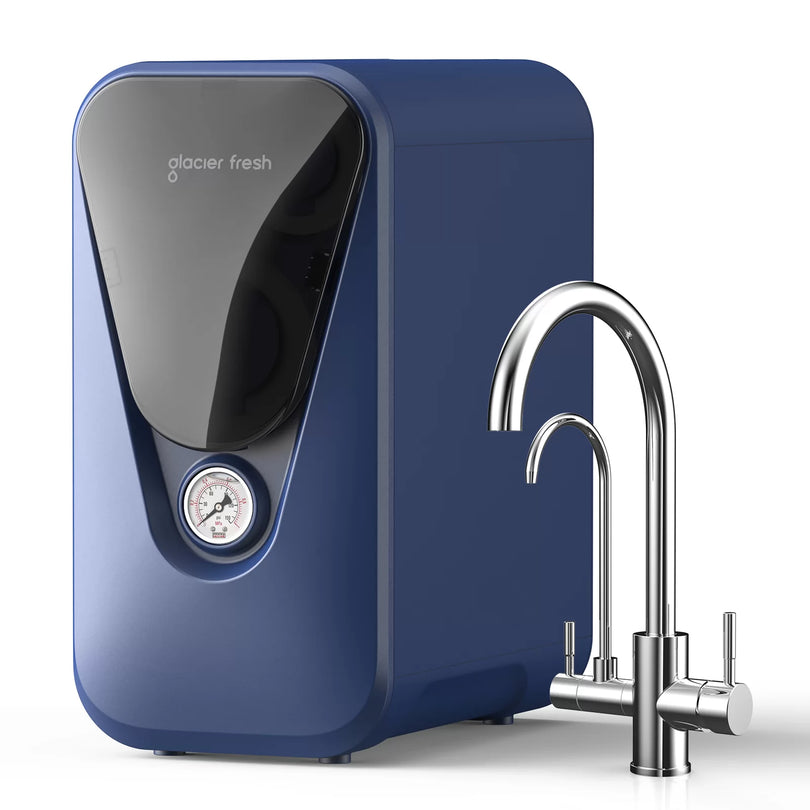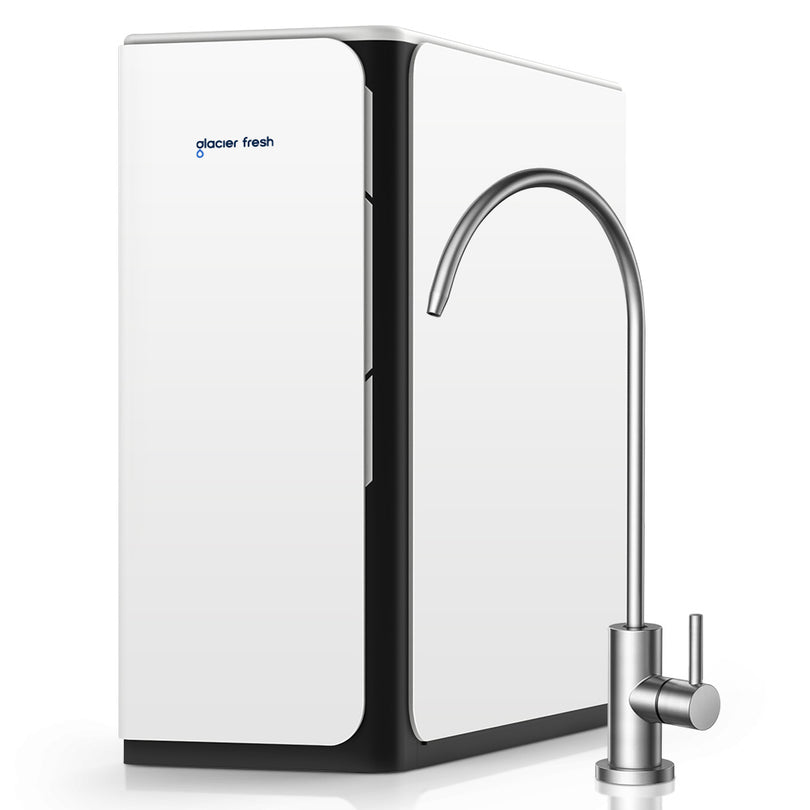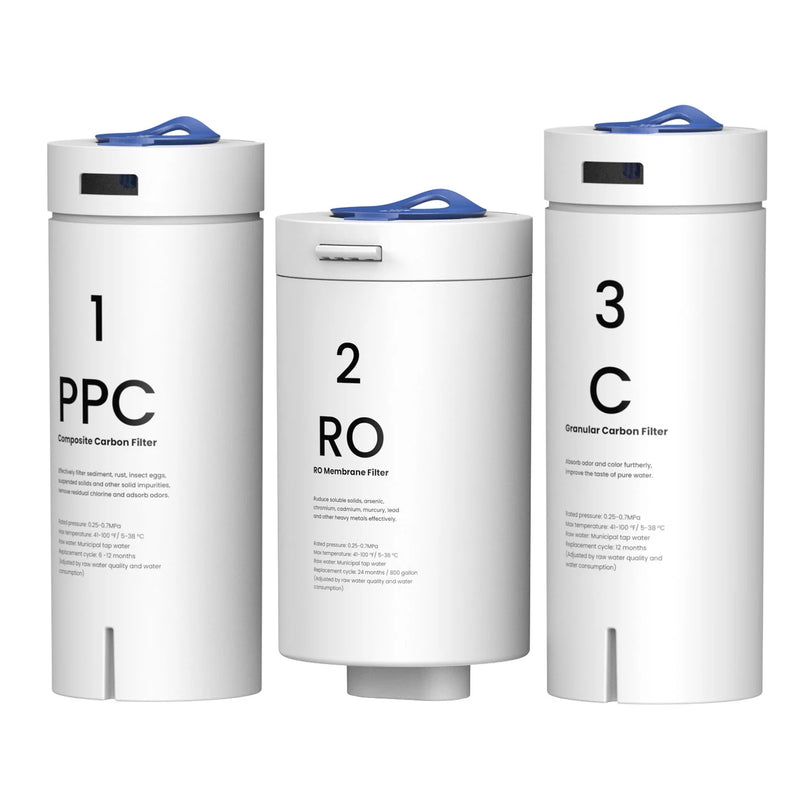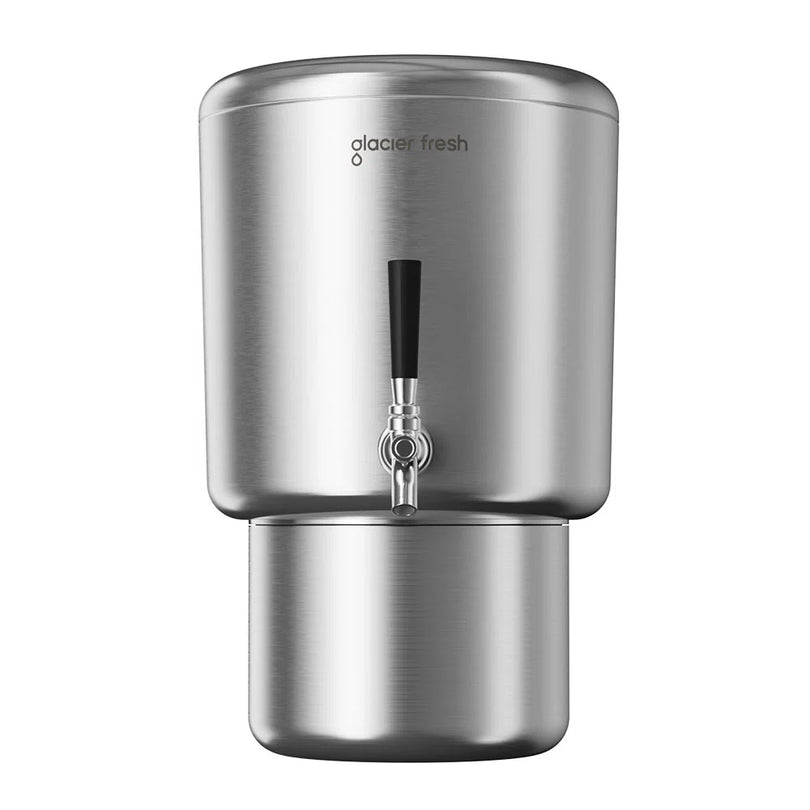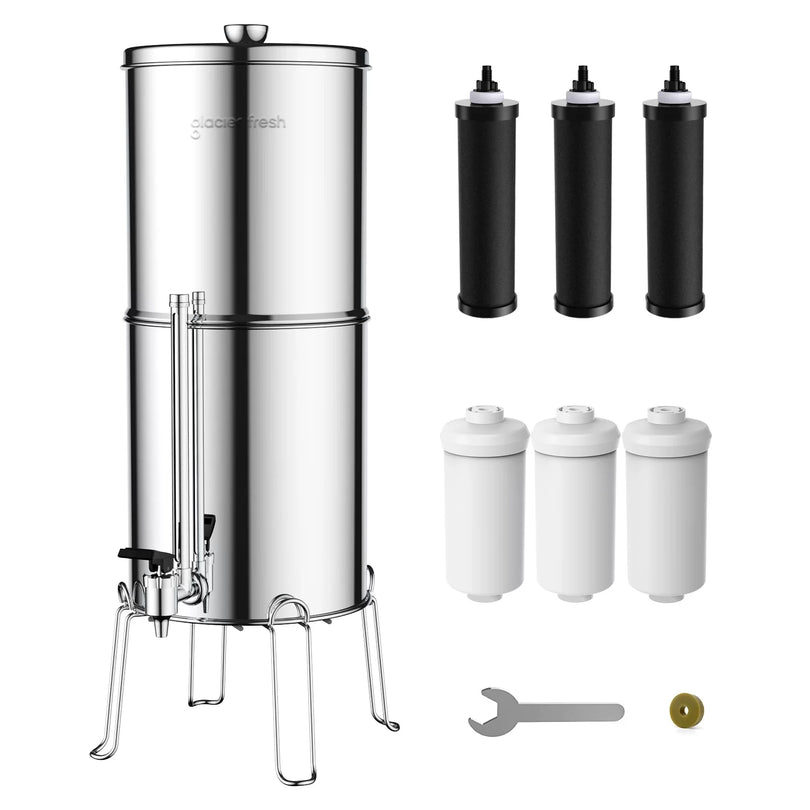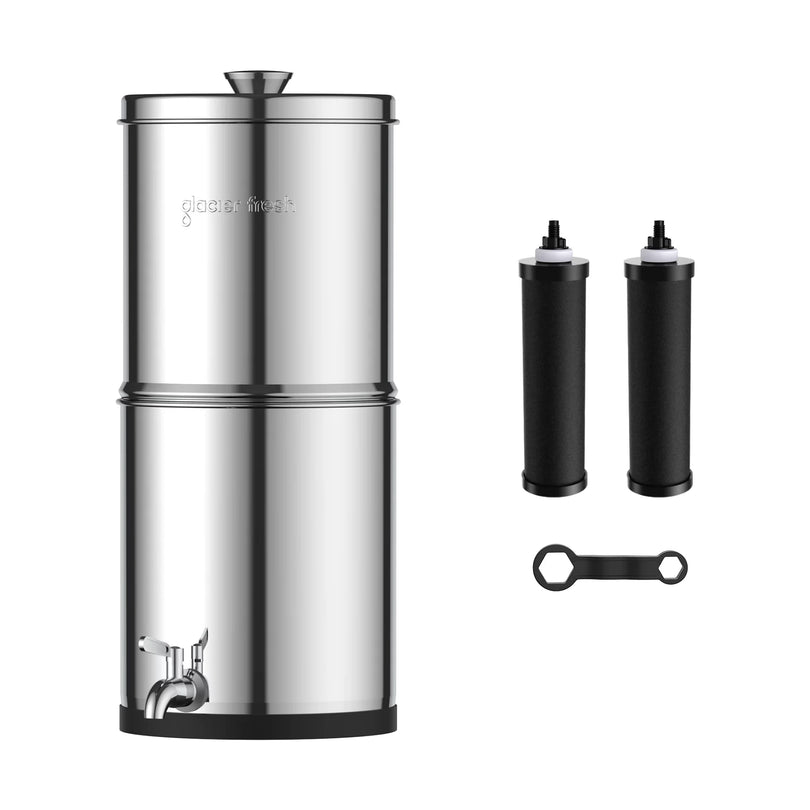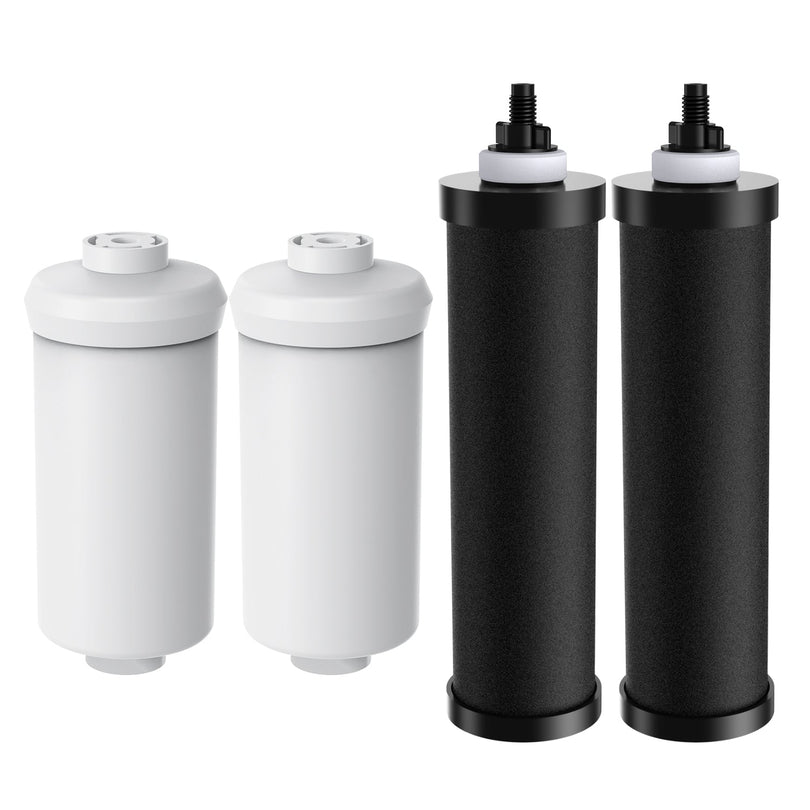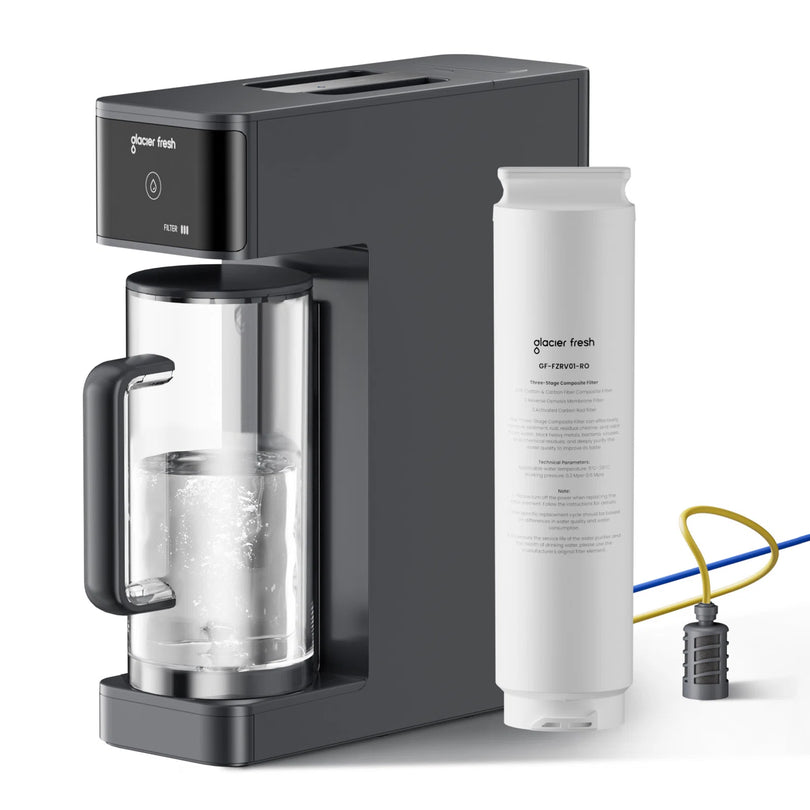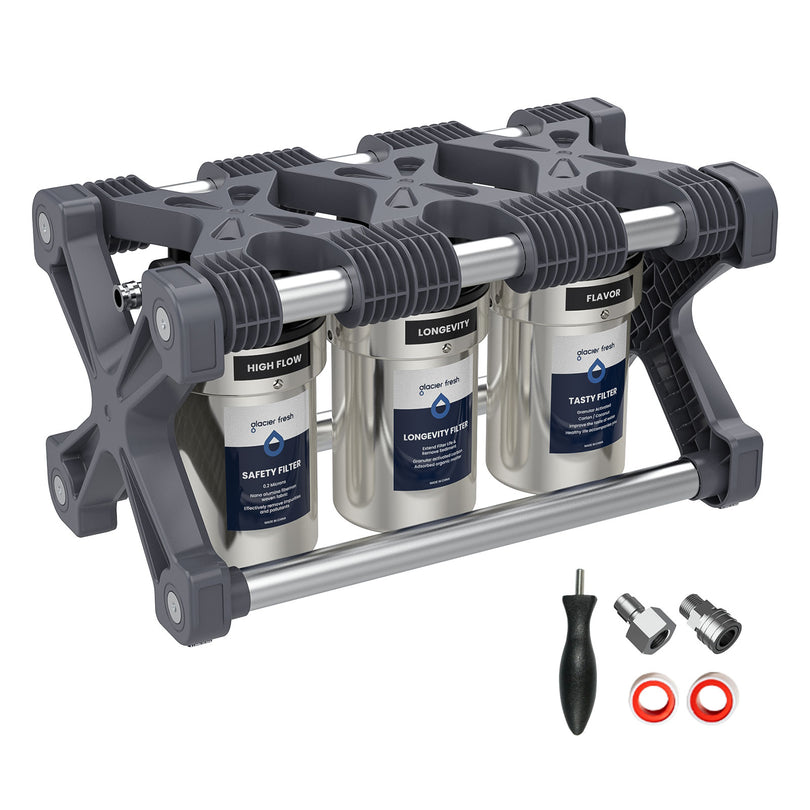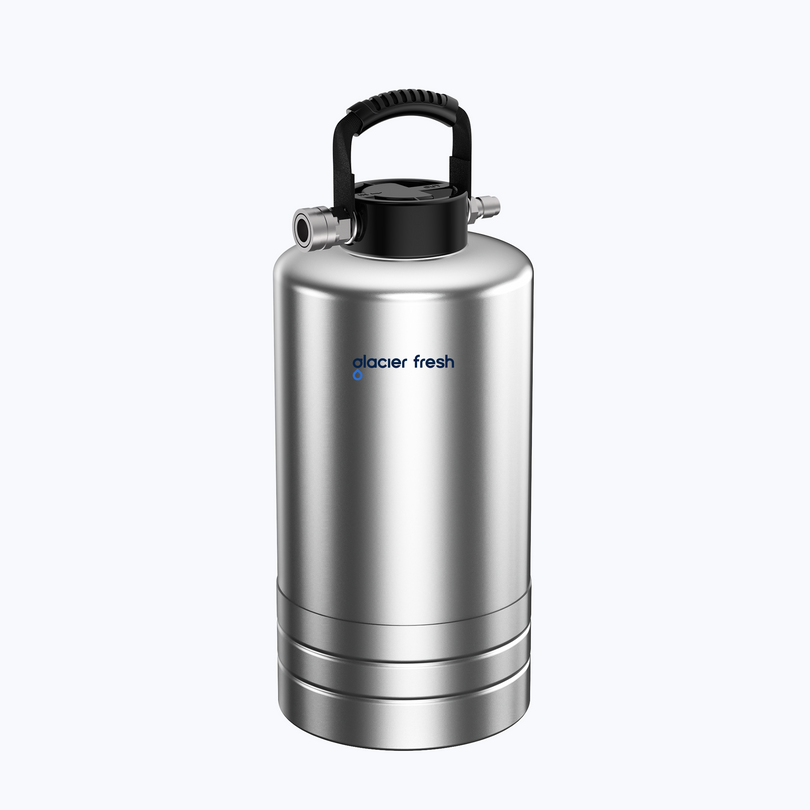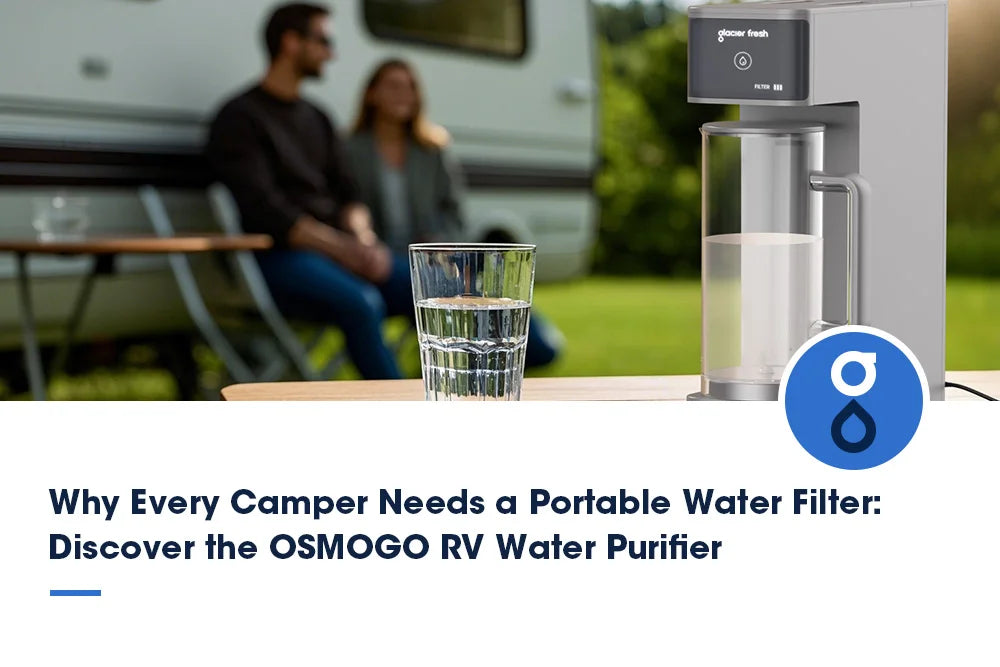Table of Contents:
How much do you know about the rusty tap phenomenon?
The root cause: aging water infrastructure
How iron enters your water: contamination pathways
Identifying iron contamination: signs and risks
Types of iron in water and their challenges
Fixing the problem: municipal and home solutions
Case studies: cities tackling iron contamination
Glacier Fresh`s prevention and long-term strategies
Conclusion
Clean, safe drinking water is a fundamental necessity, yet millions of North Americans unknowingly consume water contaminated with iron and other metals. Suppose you’ve noticed reddish-brown stains in your sink, a metallic taste in your water, or discolored laundry. In that case, you may be dealing with iron contamination—a common issue in older cities with aging water infrastructure.
In this deep dive, we’ll explore why rust and iron contamination occur, their risks, and the best solutions—both at the municipal and household levels—to safeguard your water.
How much do you know about the rusty tap phenomenon?

Rusty water is more than just an aesthetic issue—it signifies deteriorating infrastructure and potential health risks. Many older cities, particularly those with water systems dating back to the early-to-mid 20th century, struggle with iron leaching into the water supply. While iron is an essential mineral for the human body, excessive amounts in drinking water can lead to:
- Unpleasant taste and odor (metallic, bitter).
- Staining (brown or red marks on sinks, tubs, and laundry).
- Pipe damage (accelerated corrosion and clogging).
- Potential health concerns (linked to liver damage in extreme cases).
Understanding the root cause of this problem is the first step toward fixing it.
The root cause: aging water infrastructure
Much of North America’s water infrastructure was built decades ago, with some pipes over 100 years old. Cast iron, steel, and galvanized pipes were commonly used, and over time, these materials corrode, releasing iron particles into the water.
Why old cities are most at risk?
- Material degradation Older pipes made of iron or steel naturally rust over time, especially if the water is high acidity or low mineral content (soft water).
- Sediment buildup – Corrosion creates scale and sediment inside pipes, which can flake off and enter the water supply.
- Water chemistry changes – Shifts in pH, oxygen levels, or disinfectants (like chlorine) can accelerate corrosion.
According to the American Society of Civil Engineers (ASCE), the U.S. drinking water infrastructure earns a C- grade, with an estimated 6 billion gallons of treated water lost daily due to leaks and breaks. Many cities simply can’t afford full system replacements, leading to temporary fixes that don’t fully resolve iron contamination.
How iron enters your water: contamination pathways
Understanding how iron physically gets into the water flowing from your tap is key:
- Direct corrosion: The primary pathway. As described, the pipes dissolve, releasing iron ions directly into the water flowing through them. This is often the clear-water (ferrous iron) source that only reveals itself when exposed to air and oxidizes.
- Sediment disturbance: Layers of accumulated rust (ferric iron) and tuberculation (knobby corrosion deposits) lining the pipe walls constantly slough off. Changes in water flow velocity – like opening a fire hydrant, a nearby water main break, or even high demand during morning showers – can dislodge these particles, sending a plume of visible rust into homes downstream.
- Source water contamination: While less common in treated municipal systems than private wells, groundwater sources feeding the city supply can sometimes contain naturally high levels of dissolved iron, adding to the system's burden.
- Biofilm and iron bacteria: Certain bacteria thrive in iron-rich environments. They consume ferrous iron, converting it to ferric iron and forming slimy biofilms that coat pipe interiors. These biofilms can trap iron particles and bacteria, releasing them in clumps and exacerbating staining and clogging issues.
Identifying iron contamination: signs and risks

Iron announces its presence in several ways:
- Visible signs: Red, brown, or yellow staining on sinks, tubs, toilets, and appliances; cloudy or discolored water (especially after disturbances); rusty sediment settling in toilet tanks or at the bottom of glasses.
- Taste and odor: A distinct metallic taste. Sometimes described as "blood-like." Odor is usually minimal but can be musty if iron bacteria are present.
- Damage: Stained and ruined laundry (especially whites and light colors). Clogged showerheads, faucet aerators, and appliance valves (dishwashers, washing machines) with rust particles. Reduced water pressure. Scale buildup in water heaters, reducing efficiency and lifespan.
- Potential health considerations: The EPA considers iron a secondary contaminant, primarily regulated for aesthetic (taste, color, staining) and technical (clogging) reasons, not acute toxicity at typical levels found in municipal water.
High iron levels can cause many different types of damage:
- High iron levels can promote the growth of iron bacteria, which, while not typically direct human pathogens, can create environments where harmful bacteria might thrive within biofilms in pipes or home plumbing.
- The unpleasant taste and appearance can discourage water consumption, leading to dehydration.
- Very high levels of iron intake over long periods could potentially contribute to health issues like hemochromatosis in susceptible individuals, though this is rare from municipal water alone.
- Iron, especially sudden changes, can sometimes indicate other corrosion issues that might release more harmful metals like lead or copper from household plumbing, particularly if you have older lead solder or pipes.
Types of iron in water and their challenges

Fixing the problem: municipal and home solutions
Municipal-level fixes
- Pipe replacement programs – Cities like Chicago and Detroit are gradually replacing iron pipes with corrosion-resistant materials (PVC, copper, or epoxy-lined pipes).
- Corrosion control treatments – Adding orthophosphates or adjusting pH levels can reduce pipe corrosion.
- Flushing programs – Periodic flushing of water mains removes sediment buildup.
Homeowner solutions
- Water testing – Confirm iron levels with a lab test or DIY kit.
- Filtration systems –
-
- Sediment filters – Remove ferric iron particles.
- Oxidation filters – Convert ferrous iron to ferric for easier filtration.
- Reverse osmosis (RO) – Effective for dissolved iron but requires maintenance.
- Water softeners (for low levels) – Ion exchange can reduce ferrous iron.
- Shock chlorination – Kills iron bacteria if slime is present.
Case studies: cities tackling iron contamination
1. Flint, Michigan
After the lead crisis, Flint also faced iron contamination due to corroded pipes. The city has since implemented anti-corrosion treatments and accelerated pipe replacements.
2. New York City
Some pipes date back to the Civil War era. NYC has a 20-year, $1.5 billion plan to replace old cast-iron mains, reducing rust complaints.
3. Toronto, Canada
Toronto uses phosphate-based corrosion inhibitors, reducing iron leaching by 40% in treated areas.
Glacier Fresh`s prevention and long-term strategies
At Glacier Fresh, we understand that trusting your tap water shouldn't be a luxury reserved for those in brand-new suburbs. Our commitment to North American families facing the realities of aging infrastructure drives our solutions:
- Advanced filtration technology: We offer a comprehensive range:
-
- High-capacity whole-house sediment filters: The essential first barrier against ferric iron particles and sediment stirred up by main breaks or flow changes.
- Specialized iron filtration systems: Utilizing proven catalytic media for efficient oxidation and removal of dissolved ferrous iron at entry, protecting every tap and appliance.
- Reverse osmosis systems: For the purest drinking and cooking water, effectively removing residual dissolved iron, taste/odor issues, and a wide array of other contaminants at your kitchen sink.
- Maintenance kits & reminders: Ensuring your system operates at peak efficiency for years, not just months.
- Education & empowerment: We believe informed homeowners make the best decisions. Our resources (like this blog!) explain the "why" behind the problem and the "how" behind the solutions, demystifying water quality.
- Long-term partnership: We don't just install systems; we provide ongoing support, filter replacements, and service to ensure your water safety is consistently maintained. We design systems with longevity and reliability in mind, understanding that infrastructure issues won't vanish overnight.
Conclusion
Iron contamination is a solvable problem, but it requires awareness and action. If you live in an older city, test your water, consider a filtration system, and stay informed about local infrastructure upgrades.
Glacier Fresh is dedicated to helping families enjoy safe, clean, and great-tasting water. Whether through advanced filtration or community education, every household deserves water free from rust and contaminants.
🚰 Ready to test your water? Contact Glacier Fresh for a free consultation today!

